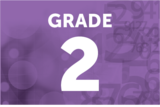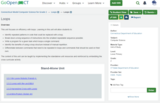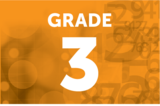CSDE Model Curricula Quick Start GuideEquitable and Inclusive Curriculum The CSDE believes in providing a set of conditions where learners are repositioned at the center of curricula planning and design. Curricula, from a culturally responsive perspective, require intentional planning for diversity, equity, and inclusion in the development of units and implementation of lessons. It is critical to develop a learning environment that is relevant to and reflective of students’ social, cultural, and linguistic experiences to effectively connect their culturally and community-based knowledge to the class. Begin by connecting what is known about students’ cognitive and interdisciplinary diversity to the learning of the unit. Opposed to starting instructional planning with gaps in students’ knowledge, plan from an asset-based perspective by starting from students’ strengths. In doing so, curricula’s implementation will be grounded in instruction that engages, motivates, and supports the intellectual capacity of all students.Course Description: Grade 3 Computer ScienceIn Grade 3 students develop their understanding of algorithms, nested loops, while loops, conditionals and more. Upon completion of this course students will have an understanding of: Digital Citizenship Sequencing EventsLoopsConditionalsAligned Core Resources: The selection of core resources is a local decision. Ensuring alignment of resources to the standards is critical for success. The CSDE has identified Code.org as a highly aligned core resource after a rigorous review process. Additional Course Information: This course is best implemented through a combination of “plugged” and “unplugged” activities. The course requires and assumes that each student has access to an internet-connected computer every day in class. The course begins with a review of the concepts found in earlier courses, including loops and events.Habits of Mind/SEIH/Transferable Skills Addressed in the Course: This course is built around a core set of student practices. These practices are high-level skills and dispositions that students should develop. Therefore, the following should be addressed throughout the course: Problem Solving Persistence Creativity Collaboration Communication Figure 5.2: K-12 Computer Science Framework. (2016). Retrieved from http://www.k12cs.orgVocabulary:Vocabulary is a way to provide opportunities for students to use academic and content language to communicate about how they solved a problem, describe their reasoning, and demonstrate understanding. Vocabulary is inclusive of key words and phrases. Vocabulary work in computer science should include words that are traditionally used and regularly appear in academic language as well as words that are specific to the discipline.Grade 3 Computer Science VocabularyAssessment:Various types of assessment guide teaching and learning. The goal of assessment is to understand student progress and identify learning evidence relative to the content standards. While the Grade 3 Computer Science Course includes an end of course project, formative assessment practices should be utilized throughout each unit. Interdisciplinary Connections:Computer Science (CS) in Grade 3 can be integrated within the curriculum of other content areas or offered as a ‘standalone’ course, depending on the school’s program. This flexible implementation allows schools the choice to determine how they will ensure that all students will have the opportunity to learn CS. The followings tasks provide connections between learning computer science and other subjects enabling computer science to be taught through an integrated approach. For a 'standalone' course approach see the units below.ELA ConnectionsCause Effect Relationship Notification Tennessee Department of Education and Tennessee STEM Innovation Network (TSIN)CCSS.ELA-LITERACY.RI.3.1 Ask and answer questions to demonstrate understanding of a text, referring explicitly to the text as the basis for the answers.CCSS.ELA-LITERACY.RI.3.3 Describe the relationship between a series of historical events, scientific ideas or concepts, or steps in technical procedures in a text, using language that pertains to time, sequence, and cause/effect.Math ConnectionsFractions Education Development Center (EDC)3.OA.A.4 Determine the unknown whole number in a multiplication or division equation relating three whole numbers. For example, determine the unknown number that makes the equation true in each of the equations 8 × ? = 48, 5 = _ ÷ 3, 6 × 6 = ?3.OA.B.5 Apply properties of operations as strategies to multiply and divide.2 Examples: If 6 × 4 = 24 is known, then 4 × 6 = 24 is also known. (Commutative property of multiplication.) 3 × 5 × 2 can be found by 3 × 5 = 15, then 15 × 2 = 30, or by 5 × 2 = 10, then 3 × 10 = 30. (Associative property of multiplication.) Knowing that 8 × 5 = 40 and 8 × 2 = 16, one can find 8 × 7 as 8 × (5 + 2) = (8 × 5) + (8 × 2) = 40 + 16 = 56. (Distributive property.)3.NF.A.1 Understand a fraction 1/b as the quantity formed by 1 part when a whole is partitioned into b equal parts; understand a fraction a/b as the quantity formed by a parts of size 1/b.3.NF.A.2.B Represent a fraction a/b on a number line diagram by marking off a lengths 1/b from 0. Recognize that the resulting interval has size a/b and that its endpoint locates the number a/b on the number line.Algorithms, Polygons and Quadrilaterals Tennessee Department of Education and Tennessee STEM Innovation Network (TSIN)3.G.A.1 Understand that shapes in different categories (e.g., rhombuses, rectangles, and others) may share attributes (e.g., having four sides), and that the shared attributes can define a larger category (e.g., quadrilaterals). Recognize rhombuses, rectangles, and squares as examples of quadrilaterals, and draw examples of quadrilaterals that do not belong to any of these subcategories.Decomposition Area Rectilinear Figures Tennessee Department of Education and Tennessee STEM Innovation Network (TSIN)3.MD.C.7d Recognize area as additive. Find areas of rectilinear figures by decomposing them into non-overlapping rectangles and adding the areas of the non-overlapping parts, applying this technique to solve real-world problemsScience ConnectionsBuild It Fix It Education Development Center (EDC)3-PS2-1 Provide evidence to explain the effect of multiple forces, including friction, on an object.3.3-5ETS1-1 Define a simple design problem that reflects a need or a want.3.3-5ETS1-2 Generate several possible solutions to a given design problem.Science and Math ConnectionsPopulations and Habitat Education Development Center (EDC)3-LS4-3 Construct an argument with evidence that in a particular environment some organisms can survive well, some survive less well, and some cannot survive.3.MD.B.3 Draw a scaled picture graph and a scaled bar graph to represent a data set with several categories. Solve one- and two-step “how many more” and “how many less” problems using information presented in scaled bar graphs.Code.org Connections provide another opportunity to incorporate computer science into other subjects. The modules make connections between computer science and other subjects like math, language arts, science and social studies. This enables educators to reinforce learning in other subjects while teaching students about computer science. Connections modules are for grades 3 to 5 and designed to take a week of 45-minute lessons each day.CS Introduction VideoCS Connections ModulesCS Connections Walkthrough Videos











